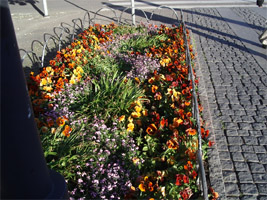 |
 |
 |
 |
 |
 |
 |
 |
 |
 |
 |
Cross sector links

The green/blue urban system is a good example of the required integrity of approaches to the urban environment and the needed close interaction in planning and management of urban infrastructure (EEA, 2005). Complex links, both direct and indirect, to a number of sectors should be taken into consideration:
Land-use and buildings – the issues of urban density and the long-term consequences of decisions made about the balance between open/built-up urban spaces and between different building types are to be discussed from ecological, social and economic point of view.
Transport – current research focuses on the complex interactions between traffic and green/blue structures in the context of urban planning and sustainability. Extensive urban green spaces are the reason for urban transport to overcome longer distances (resulting in increased operational expenses and more urban land used by transport infrastructure); transport infrastructure is on its part the reason for fragmenting greenery and causing considerable threats to biodiversity. Traffic studies also mention increased dependency on car traffic in low-density suburbs that lead to pollution, noise and fragmentation of green areas. Green/blue infrastructure may contribute to environment-friendly traffic strategies through the development of urban greenways, ‘green fingers’ and attractive networks of cycle and pedestrian tracks.
Stormwater – close and mutually useful collaboration has proved to be possible. Urban green/blue infrastructure provides areas for stormwater retention; if properly prevented from pesticide pollution, stormwater could be a valuable element in recreational areas.
Water supply and sewage – reported conflicts with the root systems of street greenery in periods of repair;
Energy – the green/blue urban system could have considerable positive impact on energy savings in cites. If properly situated and structured it could reduce overheating of buildings and outdoor facilities in summer and provide shelter from undesired heat losses in winter.
Waste – green structure development is considered particularly supportive in the regeneration of landfills, quarries, industrial brownfields at the urban periphery, etc.
